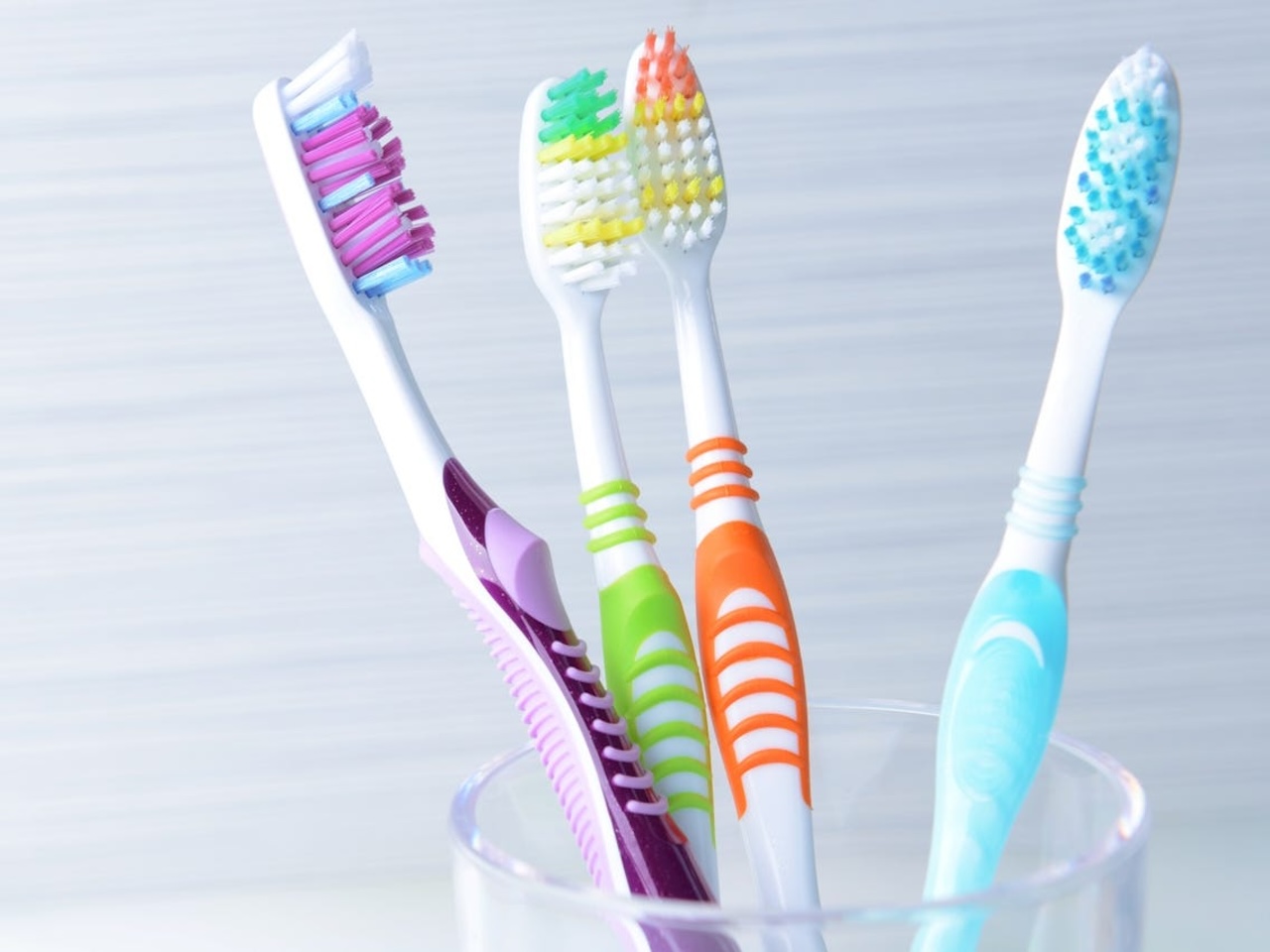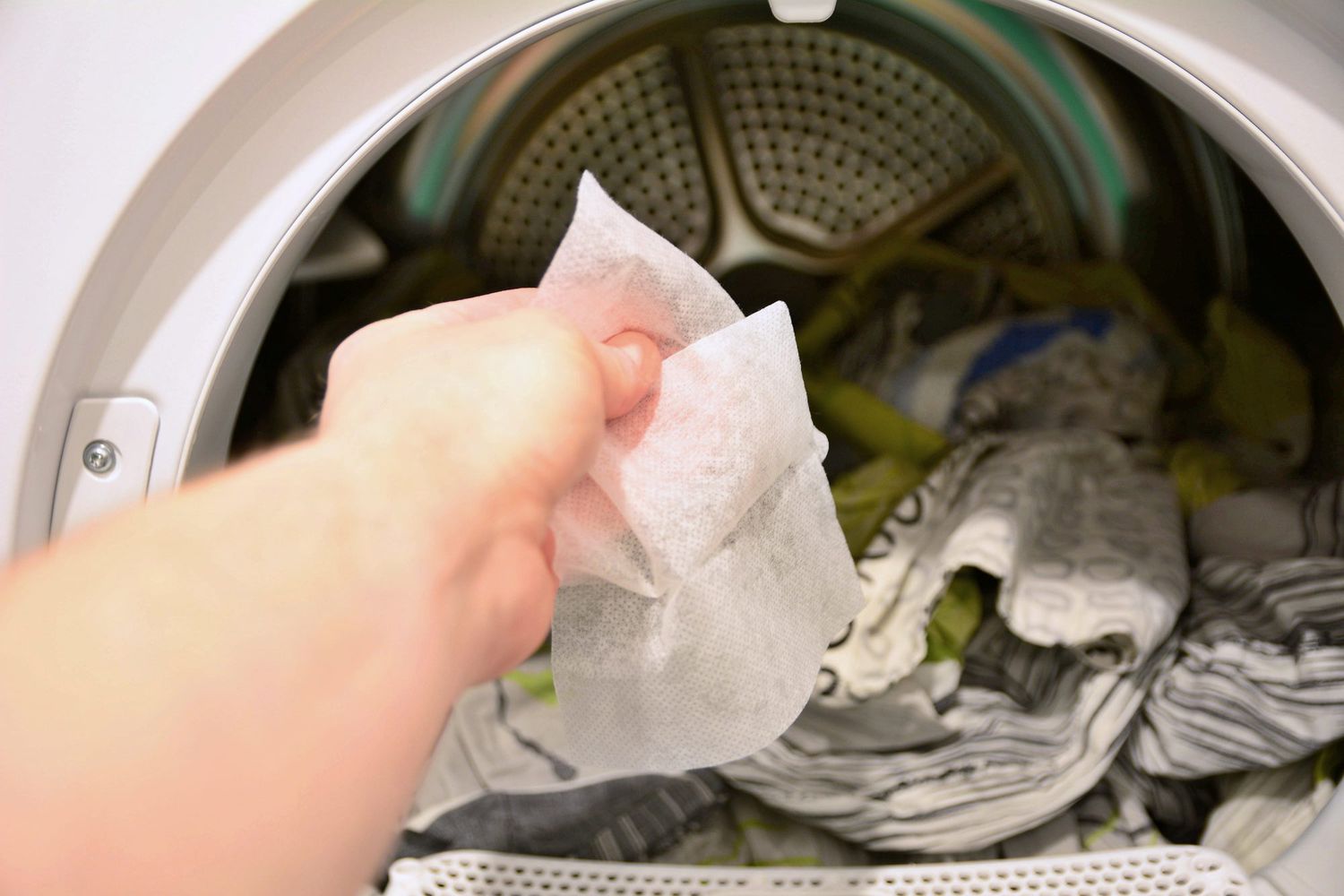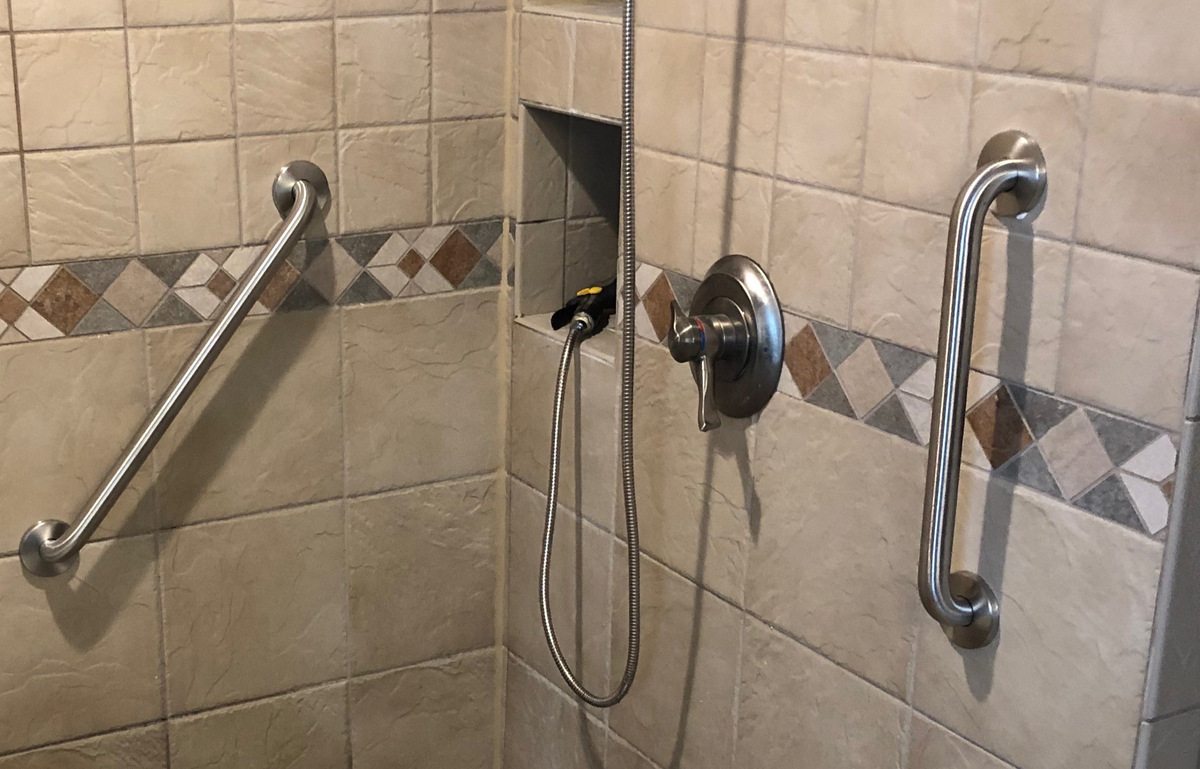Home>Furniture & Design>Bathroom Accessories>What Is The Purpose Of A Toothbrush


Bathroom Accessories
What Is The Purpose Of A Toothbrush
Modified: February 18, 2024
Discover the importance of a toothbrush and its role in maintaining oral hygiene. Explore the significance of bathroom accessories for your daily routine.
(Many of the links in this article redirect to a specific reviewed product. Your purchase of these products through affiliate links helps to generate commission for Storables.com, at no extra cost. Learn more)
Importance of Oral Hygiene
Maintaining good oral hygiene is crucial for overall health and well-being. It goes beyond having a bright smile and fresh breath; it significantly impacts our physical health. Poor oral hygiene can lead to various dental issues, such as cavities, gum disease, and bad breath. Moreover, it has been linked to more serious health problems, including heart disease, diabetes, and respiratory infections.
By practicing proper oral hygiene, individuals can prevent the buildup of plaque and tartar, which are the main culprits behind tooth decay and gum disease. Regular brushing and flossing help remove food particles and bacteria that can lead to these issues. Additionally, a clean mouth reduces the risk of developing infections and inflammation in the gums, which can ultimately affect the entire body.
Furthermore, good oral hygiene contributes to a confident and positive self-image. A healthy smile can boost self-esteem and improve social interactions. It also reflects a person's commitment to self-care and overall health, making a positive impression on others.
In essence, oral hygiene is not just about maintaining a beautiful smile; it is a fundamental aspect of overall health. By prioritizing oral care, individuals can prevent dental problems, maintain their well-being, and exude confidence in their daily lives.
Key Takeaways:
- Brushing your teeth isn’t just about a pretty smile; it’s crucial for overall health. It prevents dental problems, maintains well-being, and boosts confidence in daily life.
- Choose the right toothbrush and brush properly for a healthy smile. Consider bristle firmness, head size, and brushing motion to keep your teeth and gums clean and strong.
Read more: What Was The Purpose Of Television
Evolution of the Toothbrush
The evolution of the toothbrush is a fascinating journey that spans centuries, reflecting the ingenuity and innovation of civilizations throughout history. The concept of oral hygiene and the tools used to maintain it have evolved significantly, shaping the way we care for our teeth and gums today.
Ancient civilizations, such as the Egyptians, Greeks, and Romans, recognized the importance of oral hygiene and utilized various methods to clean their teeth. These early dental care practices involved using twigs, feathers, and even small tree branches to remove food particles and debris from the teeth and gums. The bristles were often frayed to create a rudimentary brushing surface.
The Chinese are credited with inventing the first toothbrush as we know it today. Dating back to the 15th century, these early toothbrushes featured bristles made from boar hair attached to bamboo or bone handles. This design marked a significant advancement in dental hygiene, providing a more effective means of cleaning the teeth compared to previous methods.
As time progressed, the toothbrush continued to evolve. In the 18th century, Europeans began using toothbrushes with horsehair bristles, which were later replaced by more hygienic and durable materials such as nylon. The invention of nylon bristles in the 1930s revolutionized toothbrush manufacturing, leading to the mass production of affordable and efficient toothbrushes for the general population.
In recent decades, technological advancements have further transformed the toothbrush industry. Electric toothbrushes have gained popularity for their ability to provide thorough and efficient cleaning, often incorporating features such as timers and pressure sensors to enhance the brushing experience. Additionally, innovative materials and designs have emerged, offering ergonomic handles and specialized bristle configurations to cater to diverse oral care needs.
The evolution of the toothbrush is a testament to human creativity and the continuous pursuit of improved oral hygiene. From humble beginnings as simple twigs to the sophisticated dental tools available today, the toothbrush has undergone remarkable transformations, reflecting the enduring commitment to maintaining healthy smiles across cultures and generations.
Functions of a Toothbrush
A toothbrush serves as a fundamental tool for maintaining oral hygiene, playing a pivotal role in preserving the health and cleanliness of the teeth and gums. Its primary functions encompass several essential aspects of dental care, each contributing to the overall well-being of an individual's oral cavity.
-
Plaque Removal: The most crucial function of a toothbrush is to remove plaque, a sticky film of bacteria that accumulates on the teeth. Plaque is a leading cause of tooth decay and gum disease, making its effective removal imperative for oral health. The bristles of a toothbrush work to dislodge and eliminate plaque, preventing its detrimental effects on dental structures.
-
Food Particle Removal: Throughout the day, food particles and debris can become lodged between teeth and along the gum line. A toothbrush aids in dislodging and removing these particles, preventing the accumulation of bacteria and the development of dental issues. By effectively clearing away food remnants, a toothbrush contributes to maintaining a clean and healthy oral environment.
-
Stimulation of Gums: Proper brushing with a toothbrush also stimulates the gums, promoting blood circulation and maintaining gum health. This stimulation helps prevent gum disease and supports the overall vitality of the gum tissue, contributing to a strong foundation for the teeth.
-
Fresh Breath: The action of brushing with a toothbrush helps eliminate odor-causing bacteria in the mouth, leading to fresher breath. By removing bacteria and food particles, a toothbrush plays a crucial role in combating bad breath, enhancing oral hygiene, and boosting confidence.
-
Prevention of Stains: Regular brushing with a toothbrush helps prevent the buildup of stains on the teeth, preserving their natural whiteness and luster. By removing surface stains and preventing the accumulation of discoloration-causing substances, a toothbrush supports the aesthetic appeal of the smile.
In essence, the functions of a toothbrush extend beyond mere cleaning; they encompass the preservation of oral health, the prevention of dental issues, and the promotion of a confident and radiant smile. By diligently fulfilling these functions, a toothbrush stands as an indispensable tool in the pursuit of optimal oral hygiene.
Types of Toothbrushes
When it comes to maintaining oral hygiene, the variety of toothbrushes available in the market caters to diverse preferences and specific oral care needs. Understanding the different types of toothbrushes can empower individuals to make informed choices that align with their unique requirements. Here are some common types of toothbrushes:
Manual Toothbrushes
Manual toothbrushes are the traditional, handheld dental tools that rely on manual brushing motions to clean the teeth and gums. They come in various shapes, sizes, and bristle configurations to accommodate different preferences and oral conditions. Soft, medium, and hard bristle options cater to individuals with varying sensitivities and cleaning requirements. Additionally, specialized manual toothbrushes, such as those designed for sensitive teeth or orthodontic appliances, offer targeted solutions for specific dental concerns.
Read more: What Is The Purpose Of A Toaster
Electric Toothbrushes
Electric toothbrushes, also known as power toothbrushes, feature automated brushing mechanisms powered by rechargeable batteries or replaceable batteries. These toothbrushes often incorporate oscillating, rotating, or sonic technology to provide thorough and efficient cleaning. Electric toothbrushes are favored for their ability to deliver consistent brushing motions and may include features such as built-in timers, pressure sensors, and multiple brushing modes to enhance the overall brushing experience. They are particularly beneficial for individuals with limited dexterity or those seeking a more advanced approach to oral care.
Disposable Toothbrushes
Disposable toothbrushes are convenient options designed for on-the-go use or situations where access to regular oral care tools may be limited. These toothbrushes often come preloaded with toothpaste or feature a single-use design, making them ideal for travel, emergencies, or situations where traditional oral care routines may be challenging to maintain. Disposable toothbrushes offer a portable and hygienic solution for maintaining oral hygiene outside of the home environment.
Interdental Brushes
Interdental brushes, also known as proxy brushes or interproximal brushes, are specialized dental tools designed to clean the spaces between teeth and around orthodontic appliances. These small, cone-shaped brushes feature narrow bristle heads that facilitate effective cleaning in areas where traditional toothbrushes and floss may not reach. Interdental brushes are particularly beneficial for individuals with braces, dental bridges, or gaps between teeth, providing targeted cleaning to prevent plaque buildup and maintain optimal oral health.
Natural and Eco-Friendly Toothbrushes
In response to growing environmental awareness, natural and eco-friendly toothbrushes have gained popularity as sustainable alternatives to conventional plastic toothbrushes. These eco-conscious options are crafted from biodegradable materials such as bamboo, wood, or plant-based plastics, offering a more environmentally friendly approach to oral care. Natural and eco-friendly toothbrushes provide individuals with an opportunity to reduce their ecological footprint while prioritizing oral health and sustainability.
Understanding the diverse array of toothbrush options empowers individuals to make informed choices that align with their oral care preferences and values. Whether opting for traditional manual toothbrushes, embracing the advanced technology of electric toothbrushes, or exploring eco-friendly alternatives, the availability of various toothbrush types ensures that individuals can find the perfect fit for their oral hygiene routine.
Read more: What Is The Purpose Of A Lamp
Choosing the Right Toothbrush
Selecting the right toothbrush is a crucial decision that directly impacts one's oral health and overall brushing experience. With a myriad of options available, individuals can navigate the selection process by considering several key factors to ensure that their chosen toothbrush aligns with their unique needs and preferences.
Bristle Firmness
The firmness of the bristles plays a significant role in determining the comfort and effectiveness of a toothbrush. Soft bristles are generally recommended by dental professionals as they are gentle on the gums and tooth enamel, minimizing the risk of abrasion and irritation. Individuals with sensitive gums or dental work may benefit from extra-soft bristles, while those seeking a more vigorous cleaning action may opt for medium bristles. Hard bristles should be avoided, as they can potentially cause damage to the gums and enamel over time.
Head Size and Shape
The size and shape of the toothbrush head influence its maneuverability and reach within the oral cavity. A compact head with a rounded shape allows for better access to hard-to-reach areas, such as the back molars and behind the rear teeth. This facilitates thorough cleaning and ensures that all surfaces of the teeth are effectively reached during brushing.
Handle Design
The design of the toothbrush handle significantly impacts the individual's grip and control during brushing. Ergonomically designed handles with non-slip grips enhance maneuverability and comfort, promoting a secure hold and facilitating precise brushing motions. Additionally, individuals with specific dexterity concerns, such as arthritis or limited hand mobility, may benefit from specialized handle designs that accommodate their unique needs.
Read more: What Is The Purpose Of A Plenum Thermostat?
Electric or Manual
The choice between electric and manual toothbrushes depends on personal preferences and oral care requirements. Electric toothbrushes offer automated brushing motions and advanced features, such as timers and pressure sensors, which can enhance the thoroughness and consistency of brushing. They are particularly beneficial for individuals seeking a more hands-free approach to oral care or those with specific dental conditions that may benefit from specialized brushing modes. On the other hand, manual toothbrushes provide simplicity and familiarity, catering to individuals who prefer traditional brushing methods and may not require the additional features offered by electric models.
Personal Oral Health Needs
Individuals with specific oral health concerns, such as sensitive teeth, orthodontic appliances, or gum disease, should consider toothbrushes tailored to address these needs. Specialized toothbrushes designed for sensitive teeth feature extra-soft bristles and gentle cleaning actions, while those with orthodontic appliances may benefit from toothbrushes with angled bristle configurations to effectively clean around brackets and wires. Furthermore, individuals with gum disease can opt for toothbrushes with ultra-soft bristles and gentle massaging features to promote gum health and prevent irritation.
By carefully evaluating these factors, individuals can make informed decisions when choosing the right toothbrush that best suits their oral health needs and preferences. Prioritizing comfort, effectiveness, and personalized oral care requirements ensures that the selected toothbrush becomes an integral component of a comprehensive oral hygiene routine, contributing to long-term dental health and a radiant smile.
Proper Toothbrushing Techniques
Proper toothbrushing techniques are essential for maintaining optimal oral hygiene and preventing dental issues. By following recommended brushing methods, individuals can effectively remove plaque, food particles, and bacteria, promoting the health and cleanliness of their teeth and gums. Here are key techniques to ensure thorough and efficient toothbrushing:
Brushing Motion
The recommended brushing motion involves gently moving the toothbrush in circular or back-and-forth motions, ensuring that all tooth surfaces, including the outer, inner, and chewing surfaces, are thoroughly cleaned. This technique helps dislodge plaque and debris while preventing excessive pressure on the teeth and gums.
Read more: What Is The Purpose Of A Tea Kettle
Duration of Brushing
Dental professionals advise brushing for a minimum of two minutes during each session to achieve comprehensive cleaning. Dividing the mouth into quadrants and spending approximately 30 seconds on each section ensures that all teeth receive adequate attention, promoting thorough plaque removal and overall oral cleanliness.
Angle of Brushing
Positioning the toothbrush at a 45-degree angle towards the gum line allows for effective cleaning along the junction of the teeth and gums. This angle facilitates the removal of plaque and bacteria that tend to accumulate in these areas, reducing the risk of gum disease and promoting gum health.
Gentle Pressure
Applying gentle pressure while brushing is crucial to prevent gum irritation and enamel damage. Using excessive force can lead to gum recession and tooth sensitivity, emphasizing the importance of a gentle yet thorough brushing approach to maintain oral health.
Tongue and Roof of Mouth
In addition to brushing the teeth, it is essential to gently brush the tongue and the roof of the mouth to remove bacteria and food particles that contribute to bad breath. This holistic approach to oral hygiene ensures comprehensive cleaning and fresh breath.
Read more: What Are Yellow Jackets Purpose
Regular Replacement
Regularly replacing the toothbrush or toothbrush head every three to four months, or sooner if the bristles show signs of wear, is vital for maintaining optimal brushing effectiveness. Worn bristles can be less efficient at removing plaque and may harbor bacteria, compromising oral hygiene.
By incorporating these proper toothbrushing techniques into daily oral care routines, individuals can effectively maintain oral health, prevent dental issues, and promote a confident and radiant smile. Prioritizing thorough and gentle brushing, along with regular replacement of toothbrushes, ensures that oral hygiene remains a cornerstone of overall well-being.
Frequently Asked Questions about What Is The Purpose Of A Toothbrush
Was this page helpful?
At Storables.com, we guarantee accurate and reliable information. Our content, validated by Expert Board Contributors, is crafted following stringent Editorial Policies. We're committed to providing you with well-researched, expert-backed insights for all your informational needs.











0 thoughts on “What Is The Purpose Of A Toothbrush”